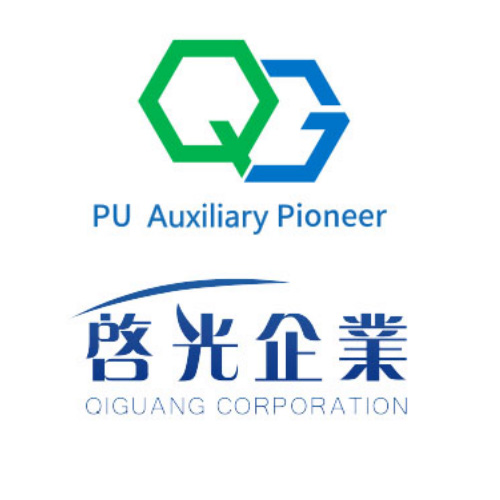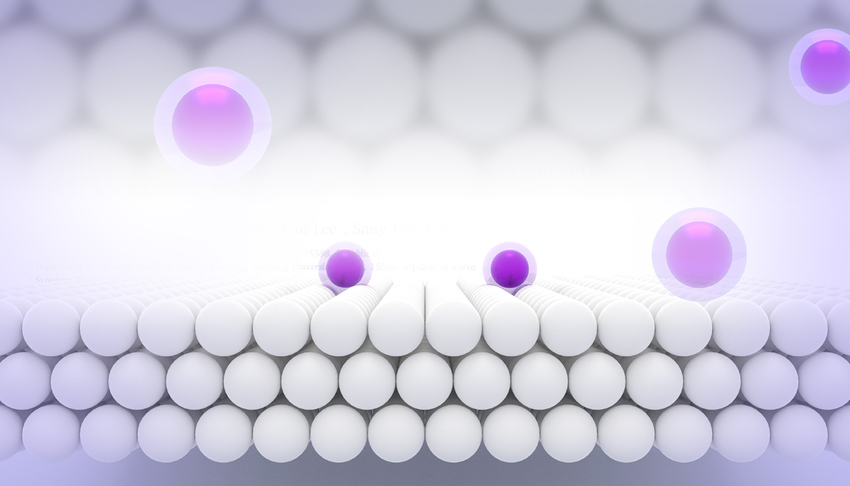When everyone is confident that China’s polyurethane industry has entered a stage of rapid development, we should pay more attention to the future development direction of polyurethane, where technology accepts difficult innovation challenges, and where benefits are greatly improved. In which areas should our perspective focus more? I hope you can gain something from reading the following article.
Polyurethane rigid foam and building energy conservation Polyurethane rigid

Foam is an insulation product with the best thermal insulation performance among all wall insulation materials currently, and it is also the most forward-looking insulation material in the world. The Science and Technology Department of the Ministry of Construction has established a working group for the promotion of polyurethane building energy-saving application, and held the “International Exchange Conference on Polyurethane Wall Energy-saving Application Technology” in Beijing on October 10, 2006. The meeting unanimously agreed that polyurethane materials are currently the best thermal insulation materials in the world. They have excellent properties such as light weight, thermal insulation, moisture-proof, sound insulation, heat resistance, shockproof, corrosion resistance, easy to bond with other materials, and no droplets when burned. At present, polyurethane rigid foam is mainly used in heating, refrigeration, shipbuilding, petroleum, chemical, automobile, transportation and other industries in my country. The share used in building wall insulation is less than 10%. In developed countries such as Europe and the United States, the proportion of building insulation materials About 49% is polyurethane material. With the further improvement of domestic building energy-saving standards, the number of institutions and companies conducting a series of research in the field of thermal insulation and energy-saving has gradually increased. Rigid polyurethane products will “make great progress” in the construction field.
Polyurethane tire Polyurethane elastomer is a polymer synthetic material that has both the high hardness of plastic and the high elasticity of rubber. Based on its excellent mechanical properties, research on the application of polyurethane elastomers in tires has been conducted since the 1960s. In particular, cast polyurethane elastomer is the most wear-resistant elastomer at present. It has the advantages of colorability, high cutting resistance, vibration absorption, shock absorption, very large load-bearing capacity, excellent oil and chemical resistance, and is non-toxic to the human body. , and can be completely biodegraded without adding carbon black and aromatic oil. It is an ideal material for making tire treads. Polyurethane tires are manufactured using a casting process, and their structure is very different from currently produced tires. Full polyurethane pneumatic tires are composed of three parts: carcass, belt layer and tread. There are two forms of polyurethane pneumatic tires: one is that the carcass is cast polyurethane, and the tread is the rubber used to make ordinary tires; the other is that the carcass is a radial carcass, and the tread is polyurethane. Compared with ordinary steel wire radial tires, polyurethane pneumatic tires have the following advantages: (1) Fuel consumption is 10% lower on average; (2) Tread wear is 51% lower; (3) Weight is 30% lighter; (4) Rolling resistance is 35% lower % or more; (5) The uniformity is better and there will be no tread peeling.
PU tires include full PU wheels (PP type) and rubber outer PU inner tubes (RP type), which are suitable for various electric walkers, wheelchairs, children’s strollers, etc. Product advantages: good shock absorption, friction resistance, not afraid of nails, no deflation, no need to repair tires, safe and save money. However, there are still some problems to be solved in the current research on polyurethane tires, namely improving the traction and braking performance of polyurethane tires, improving hydrolysis resistance, and the multiple injection molding process of truck tires. In the process of developing polyurethane tires, high temperature resistance is the main factor affecting the practical use of polyurethane tires.
Waste polyurethane recycling Environmental protection is another major issue facing the rising polyurethane industry. As polyurethane materials are used more and more widely in the national economy and their usage is increasing, the recycling and reuse of their waste has also attracted increasing attention. Waste polyurethane mainly includes corner scraps from production plants, mold overflows, scrapped cars, polyurethane foam and elastomers in refrigerators, waste shoe soles, waste PU leather, old spandex clothing, etc. There are currently three main methods for recycling polyurethane: physical method, chemical method, and energy method.

The EU took the lead in introducing the recycling of waste polyurethane productsGas is very harmful. In recent years, the development of halogen-free flame retardants to replace halogen flame retardants has become a global flame retardant development trend. Research and development of new flame retardants to reduce the amount of smoke and toxic gases produced when materials are burned has become one of the key research topics in the field of flame retardancy in recent years. The currently used smoke suppressants are mainly metal oxides and transition metal oxides, mainly zinc borate, aluminum compounds (aluminum trioxide, ammonium lead oxide) and their compounds, magnesium-zinc complexes, ferrocene , tin oxide, copper oxide, etc. The synergistic system has good flame retardant effect and low cost. It can be both flame retardant and smoke suppressant. It also has some special functions. Commonly used synergistic systems are mainly halogen-phosphorus, antimony-phosphorus, phosphorus-nitrogen, etc., to improve the flame retardant performance. Purpose. Red phosphorus is one of the main flame retardant synergists. It has synergistic effects on aluminum hydroxide, nitrogen and other flame retardant systems. my country’s flame retardant research started late. Although it has made great progress, there is still a certain gap in output and variety structure compared with advanced countries. At present, domestic research and development focus on inorganic flame retardants, red phosphorus microencapsulation, intumescent flame retardants and other fields, and have achieved certain results. Halogen-free, high-efficiency, low-smoke, and low-toxic new flame retardants are the development direction of today’s flame retardants. It is reported that brominated epoxy resin, which was once best-selling abroad in this industry, is a good engineering flame retardant. However, European and American countries have stopped using this type of product from the perspective of environmental protection, which has seriously affected the domestic production of brominated epoxy resin. Influence. The industry is making every effort to accelerate the development of phosphorus epoxy resin flame retardant products.
Polyurethane foam blowing agent HFC-245fa HFC-245fa (1,1,1,3,3-pentafluoropropane), molecular weight 134.0; boiling point 15.3℃; no flash point and non-flammable; ozone depletion potential (ODP) is Zero; GWP value is very small, only 1.5%-3.0% of CFC-11; low toxicity; gas diffusion rate is low, and the aging insulation performance of the foam is good. Under the same foam density, the HFC-245fa system is equivalent to HCFC-141b in terms of price and performance. The foam has a uniform appearance, a fine cell structure, high compressive strength, and because of its low boiling point, it can provide a wider operating range. Insulation performance tests show that the energy consumption of HFC-245fa foaming technology is only 2% higher than that of HCFC-141b foam, while the energy consumption of other zero-ODP foaming agents, such as cyclopentane, is 10% higher. In the United States, Japan and other countries, HFC technology represented by HFC365fmc and HFC-245fa is considered an ideal substitute for CFC-141b.
The main application in my country is the liquid HFC-243fa foaming system. The toxicity and other related properties of HFC-245fa were extensively tested, and a production facility for HFC-245fa was built in Geismar, US (with an investment of US$130 million) in August 2002, claiming that the facility could meet the needs of the world market. , and can continue to expand production capacity. In 2002, Japan successfully developed a new formula technology that can obtain low-pressure HFC-245fa products. In October 2003, its chemical subsidiary built Japan’s first 5,000 tons/year HFC-245fa device (investment of 3 billion yen). A typical formula uses a small amount of water and about 13% HFC-245fa, and another formula uses 11% HFC-245fa and more water. The foam density can be reduced by 5%, and the thermal conductivity is slightly increased, while any other physical properties are not affected. Negative impact, material costs were reduced by 10%. my country’s Zhejiang Lantian Environmental Protection has now begun production and export.
Huntsman and American Gas Chemical Company have studied DabcoPM200, an additive designed specifically for HFC-245fa systems. This additive has surfactant properties and can reduce the viscosity of the mixture to enhance foaming. The UK has also made its own achievements in the application of HFC-245fa technology. my country’s research and application of HFC-245fa started with refrigerator foam. In addition to refrigerators, the HFC-245fa fluorine-free combined polyether basic formula system used in polyurethane sheets (continuous sheets and intermittent sheets), polyhydrester spraying, and polyurethane pipe insulation is also being researched and developed. This is a way to enter the international market. It is necessary to speed up the elimination of transitional substitutes and prepare technical reserves for the comprehensive elimination of ODS in my country.
Liquid crystal polyurethane Polyurethane elastomer is a polymer material with high elasticity and high extensibility. The urethane is composed of amido and ether groups. From the perspective of chemical structure, it can be inferred that the physical properties of polyurethane are between Between polyamide and polyester, it is very necessary to prepare and characterize liquid crystal polyurethane. In recent years, research on liquid crystal polyurethane has been relatively active in the world, mainly focusing on the selection of raw materials, optimization of process routes and improvement of physical properties. Liquid crystal polyurethane is composed of rigid mesogene and flexible spacer group. It is a polyurethane elastomer with liquid crystal properties in the melt state. The material has good mechanical, thermal stability, high elasticity, high elongation properties and good processing properties. The synthesis of liquid crystal polyurethane elastomer adopts a one-step or two-step polymerization method. Various processes are available, including extrusion, injection molding, and coating. Products can be divided into main chain type liquid crystal polyurethane and side chain type liquid crystal polyurethane. Main chain type liquid crystal polyurethane means that it contains liquid crystal segments in the main chain, and side chain type contains liquid crystal segments in the side chain. No matter what kind of polyurethane it is, it is now facing two major problems that need to be solved. One is to synthesize polyurethane with a high enough relative molecular weight so that it has high strength and high modulus properties.